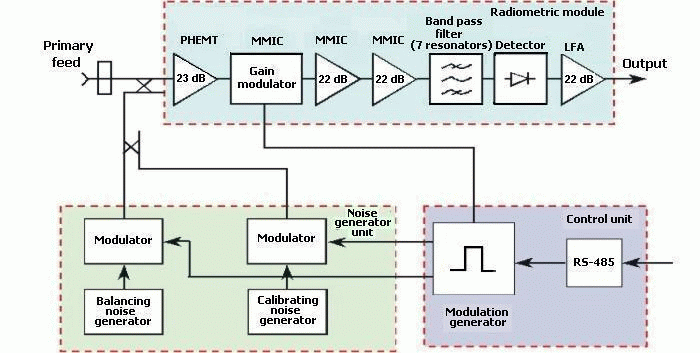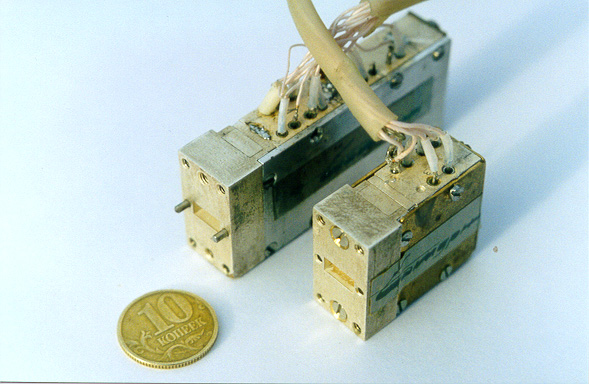|
The MAtrix Radiometric System project is intended to design more or
less simple, but effective radiometric support to the

Figure 1. Block diagram of single channel radiometer MARS-1. |
|
The MAtrix Radiometric System project is intended to design more or
less simple, but effective radiometric support to the

Figure 1. Block diagram of single channel radiometer MARS-1. |
The design was a straight amplifier, without any frequency
conversion. The key components used were:
Parameters of the resulting radiometric receiver were as follows:
fo = 30 GHz
( 
Figure 2. The radiometric (left) and noise generator modules. |
|
The overall dimensions of the radiometric module are 13x24x59 mm and of the noise generator module are 13x24x29 mm. The input waveguide window is for WR28 waveguide. MARS-1 radiometric module investigated at the laboratory at three different modes of operation: total power, noise-added (NAR) and switched mode. As a result of test, only the last mode was accepted for future application, as the stability of the switched radiometer was about of the order of magnitude better (or, in other words, 1/f knee frequency was correspondingly lower), than for other modes. The first MARS-1 radiometric module was tested at the RATAN-600 radio telescope completed with it's regular radiometers. The result (atmospheric radio emission recording) is shown in the figure 3. 
Figure 3. Atmospheric radio emission at four wavelengths of RATAN-600.
The output signals of the short-wave radiometers
( |
|